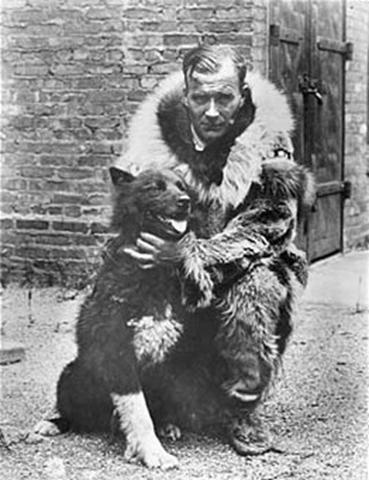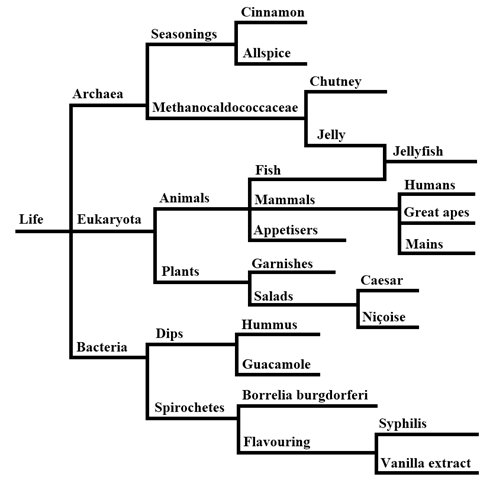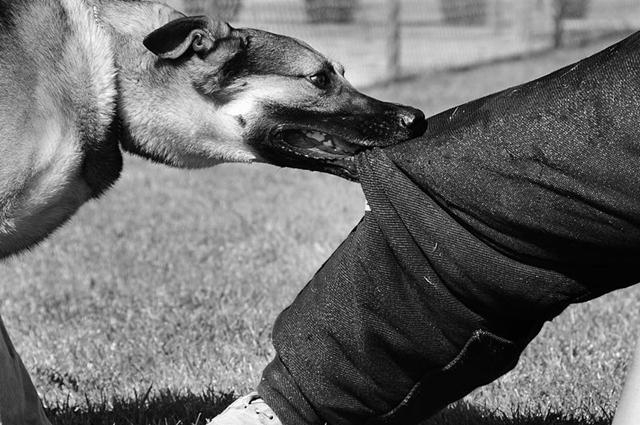Some animals are capable of primitive non-verbal forms of communication, such as semaphore, but only the human animal has developed comprehensive spoken and written languages to convey important messages about love, survival and unbeatable two-for-one sales.

The basic unit of human language is the word, which makes up 40% of what humans say. The remainder being filled by political speeches. A word represents a concept in the world. For example, the word elephant is used in human communication to represent an elephant in the real world. Some other example words are,
elephants,
elephant seal,
spirit level, and
antidisestablishmentelephantarianism.
As demonstrated in the above examples not all human words are elephant related, but humans do have a rich elephant-based vocabulary. When walking down the high street of any English-speaking town you are sure to hear common phrases like “that movie was so elephant” and “I’m going to elephant so much it will elephant your mind.”

By stringing words together a human can create a sentence. For example, this one. With so many words to choose from, such as elephant, shiny and flooglehoond, the range of sentences a human can construct is vast and allows the human to talk about anything, from elephants to football and back to elephants again.

It used to be thought that a human learned to use language by mimicking role-models like its parents or a genetically-engineered, super-intelligent gorilla. A child would copy the sound of a word and learn by trial and error when it is correct to use that word. After many examples and a lot of correction a child will progress from saying “I runned to the shop” to saying “I ran to the shop.”
But this example-mimicking explanation falls short because it
does not explain how a human can understand a sentence it has
never heard before. Consider this sentence: The large,
purple thought runned ran fashionably. While
this sentence makes no sense, and surely no one has ever heard
it before, any English-speaking human or mutant ape will know it
is a correctly structured sentence.
The only viable explanation, apart from some manner of grammar-elf, is that a part of the human brain is dedicated to defining and understanding the rules of language. This language processor comes pre-programmed to interpret examples from any language in order to tell the human how to properly form new sentences in the language in which the examples are given. So, hearing two example sentences from its role models a human can go on to spontaneously create many more correctly formed sentences, which it has never even heard before:
Example 1 Your father, Tarzan, and I are getting a divorce.
Example 2 The fish ran away with the spoon.
Spontaneous new sentence 1 Your father, Tarzan, and the fish ran away with the spoon.
Spontaneous new sentence 2 Your fish and I are with the spoon, Tarzan.
Spontaneous new sentence 3 Your father, Tarzan, ran away with Tarzan, Tarzan.
The implication of grammar being encoded within the brain, and not just the result of copying the behaviour of greater and lesser apes, is that this knowledge of languages must be passed on genetically from one generation to the next. Therefore, language is a matter of nature as well as nurture; the structure of language is encoded within a human’s genes.
The implication of language being genetically encoded is that other types of knowledge could be genetically encoded. Some humans may have better genes for mathematics, for emotions, or for morality. A human, or ape-human hybrid, could be genetically predisposed to communicating well, or not predisposed to writing good.
The implication of genetically inherited abilities is that most humans are a lot better at mathematics than they think. If mathematical variation is genetic (a matter of nature), and not educational (a matter of nurture), then a human should not compare its abilities with other humans, but with other species. The range of genetically determined ability within a species (intraspecies) is tiny compared to the wide range between species (interspecies). So a human should not feel bad for being dumb compared to an accomplished mathematician, it should feel good because it is better at maths than all plants and animals. The only exception is one of those counting horses, they’re really smart.

The law is a system of guidelines, nice ideas and friendly reminders, which are enforced on pain of death to make the world a better place. Laws are made by governments, specifically by their legislatures, and broken by governments, specifically by their legislatures. The formation of laws might be influenced by morality and citizens, but will definitely be influenced by lobbyists. The law influences societies in countless ways (believed to be seven) and serves to settle conflicts between people like a legal Thunderdome.

There are two types of law in the world: God’s and other. Of the latter there are two jurisdictions, civil law and common law.
A civil law jurisdiction has a legislature (law makers) that conjures laws from the air and publishes them in legislation, also known as The Big Book of Bad Behaviours.
In common law jurisdictions the decisions and indecision of judges becomes the basis for laws and future judgements relating to similar matters. These judgements are called precedents. When a judge rules on a new type of case he or she is said to be “setting a precedent.” Religious law is a type of common law wherein God saves judges a lot of time and confusion by setting all precedents in metaphorical and literal stone.
Crimes under the law are divided into three main areas: Criminal, civil and against fashion. Criminal law is concerned with crimes that may cause harm to society but do not pertain to safari suits. Examples of crimes under criminal law include first degree murder, second degree murder and fourth degree murder. Civil law is concerned with settling lawsuits between parties, which can be individuals, organisations or rockin’. Examples include contract dispute resolution and third degree murder. Civil law judgements seek to provide compensation to the party that has access to greater legal resources.

The law of the land is impartially enforced by the police, military and angry mobs. When crimes are committed and suspects are charged their guilt will be clear for all to see in a court of law or conference centre that has been booked in advance by the angry mob’s secretary. When the guilty verdict has been rubber-stamped the criminal may be jailed, fined, lynched and admonished. Not necessarily in that order. Upon the sentence being completed the criminal has repaid its debt to society and is free to kill again or, in the case of wrongful imprisonment, seek vengeance under the protection of double jeopardy laws.
An average human lasts 75 years, longer if they eat oily fish twice a week. This is plenty of time to get things done, if it is used wisely. An efficient human will have meaningful relationships, participate in a productive career, and construct their own 100 million-ton granite pyramid complex as their eternal resting place. Some humans use their time unwisely, so are forced to create a legacy to complete these life chores.
Human legacies come in many forms. One human may educate children about preserving ocean life. Another human might establish a centre for nutrition research. And a third human could fund a campaign on the importance of eating oily fish twice a week. These are some of the options for a human’s legacy when they want to make the world a better place. But, for a human that thinks the world can’t be improved or will be worse when they are forgotten, their legacy options are limited.
It is a common human fear that they will be forgotten when they die.1 A fearful human ensures they are remembered by enslaving other humans to build a gigantic, stone memorial that will last thousands of years and never be forgotten, especially by those enslaved to build it.

Humans hope to make legacy obsolete by learning to live forever. With eternal life, a human does not need to enslave other humans to construct their pyramids or endure their meaningful relationships, because they have time to do these things themself. Science about eternal life is in its infancy, with early research indicating that a human could live forever if it ate oily fish twice a week.
See Life.
Life is the totality of a human’s existence from birth to death. Within this span is the music of life that flows like a fine metaphor. A human is free to do what it pleases between the hours of birth and death; some take salsa classes, some drink and others choose to work too much. After getting bored with life a human moves on to make room for the next generation. At death a human life can be measured in years and net worth.

Beyond common classifications of life, such as dull and meaningless, there are standard biological categories for keeping one’s life in order. This modern biological taxonomy is the result of many years of refinement and now takes into account Darwin’s Theory of Evolution, genetics and cockney rhyming slang.

Every known form of life is assigned a place on this biological menu for the purposes of identification and wine selection. An organism may be reclassified if new discoveries about it are made. For example, the South African golden mole was originally in the same category as all other moles because of similar appearance and behaviour, but it has been reclassified because genetic testing proved it actually goes better with a dry white.
From the Greek words taxis (arrangement) and -nomia (of the menu), see root nom nom nom.
The father of modern taxonomy is the Swede Carl Linnaeus who categorised life according to flavour. His system quickly became inadequate because most lifeforms taste like chicken. The Theory of Evolution and DNA sequencing are now used to classify lifeforms in addition to the standard deep fry and serve at room temperature test.

The modernal biological taxonomical systemical categorises lifeforms into these categories, which become more specific as you move down the list.
Life An object is alive if it is animate, responds to stimuli, metabolises, can reproduce and is edible. Many humans meet these criteria.
Domain The three domains of life are:
Plants and animals fall into the third category. Humans and song-birds may be moved to a new domain that is reserved for lifeforms that can Tweet.
Kingdom The kingdoms are how most people would categorise life: Animals, plants, fungi, bacteria and other categories for more specific types of microscopic critters.
Phylum This level relates to the lifeform’s body plan, or its distinguishing physical features. Also, it has been expanded to consider evolutionary similarities. The animal kingdom has approximately 35 phyla, plants have twelve. Some examples are u-shaped gut and mouth surrounded by invertible tentacles. Humans have 2743 phyla including afro, perm, bouffant, comb over and faux-hawk.
Class Classes have no strict definition and are defined by consensus among taxonomists. A single class will possess a number of distinct features, such as body hair and warm blooded. Example classes are Mammalia, Sauropsida and Desserts.
Order Orders are defined by the consensus of taxonomists and waiters. They group lifeforms with similar nature or character. Example orders are Carnivora (meat-eating animals) and medium-rare. Humans and gorillas belong to the order of Primates.
Family Family is also determined only by consensus. It defines major types within an order that share common attributes. Humans are in the family Hominidae, also known as the great apes because humans and apes share many attributes.
Genus The genus groups species that are closely related in evolution and genetics. Along with the species (below) it makes up the Latin name for a lifeform. These names are created following the rules of binomial nomenclature, which means “method for naming things using two words.” Humans and their now-extinct close relatives are all Homos.
Species lifeforms are in the same species when they can breed. The species is the second half of the Latin name, and is always written in lower case. The human species is sapien, therefore its Latin name is Homo sapien .
Name The name of the lifeform, e.g. Geoff, Fido or Cynthia.
From the Latin words homo (man) and sapien (wise). Compare with Homo jerkus and Homo stultus.

Modern human society is a bustling, tiresome place, with almost nowhere to sit down or get a decent coffee. The hectic nature of the world makes it difficult to sell anything, which humans are wont to do. To overcome this problem marketing bigwigs have created methods of cutting through, and/or adding to, the noise. In years gone by salesmen found that megaphones were a great way to get the message out, but modern, savvy advertisers prefer the subtle approach of the logo.

Modern manufacturers provide so many wonderful things to own that no consumer could reasonably be expected to desire them all. A logo is a visual symbol that encapsulates the essence of a company and its products, so rather than being bogged down in the detail of wanting specific things, humans simply long for any item that bears the right logo.

Through advertising and sponsorship logos are connected with desirable attributes like victory, dominance, humility and piety. The result is that humans who purchase branded products are better.

In addition to being the plural of ‘logo’, Logos moonlights as a philosophical and religious term that has many interpretations, some of which make sense. In Christianity, Logos is abused many times:
As a nickname for Jesus and God,
The Logos became flesh and made his dwelling among us. - John 1:14
As the divine law created by God, which dictates order in the world,
As the source of creation that is God or made by God.
As a word for “word” in John 1:1,
In the beginning was the Logos (Word), and the Logos was with God, and the Logos was God.
From Greek, meaning word, a reason and an account. Pronounced to rhyme with ‘Diana Ross’. Logos is the origin of the suffix -logy used to identify many well known fields of scientific enquiry like otorhinolaryngology.
The Roman Stoic philosophers used the word Logos long before God got His greedy hands on it. To them it was also the divine force that brought order to the world. They even captured the Logos in its religious sense with the term Logos Spermatikos, which is the source of all creation, and much snickering.

If you’re lucky enough to observe a human in the wild, you will be impressed by its ability to get by with very little: food, water, shelter and the occasional Sunday newspaper are all a human needs to survive. But these necessities are rudimentary compared with a human’s main sustenance, LOVE! A human life without love misses the point of humans altogether. Given the chance, a human will attempt to love almost anything, including,
friends, family, animals,
poetry, art, music, and
objects like cars, houses and granite work tops.
Humans are one of many species able to endure the formidable, crushing force of love. Elephants and lovebirds are two examples of animals that enjoy heartfelt canoodling. Dogs are more capable of loving even than humans, although it should be noted that their strength is their ability to accept love rather than give it. Therefore, it is more correct to call dogs selfish than loving.

Like alcohol, love has a strong effect on the human body. A human in love has all the symptoms of a heart attack and should seek medical attention to confirm that loving feeling. Male humans in love behave in a reckless manner to impress females. In the event of true love a female will faint. In the case of everyday love a female will only feign interest in the males’ reckless behaviour. Fortunately, love is not contagious. In fact, humans exposed to the lovey-dovey nature of a couple in love are likely to be disgusted by the sight of it.

Humans express their love for others with poetry. Master wordsmiths, such as Shakespeare and Neil Diamond, have been able to express the feeling of true love in poetry and song. Even amateur humans are able to declare their romantic intentions with the use of a standard poetic form.
Roses are red.
Violets are blue.
(Insert romantic sentiment here)
And I love you.
For example,
Roses are red.
Violets are blue.
I wish you were here.
And I love you.
And another,
Roses are red.
Violets are blue.
I’m Neil Diamond.
And I love you.
Stupidly, humans only allocate themselves one day a year to express their true feelings for loved ones. The 14th of February ever year is Valentine’s Day, and is the only opportunity for loving couples to accept each other’s romantic terms and conditions. Also, this day is the one time that anonymous admirers are allowed to secretly target others with their feelings.

Today I told my dearest Francine how I feel about her. I knew she would be at her hot yoga class, so I waited in the gym reception area for her to emerge. Of course, after hot yoga, she was sweating buckets, but I didn’t care. I would gladly soak in a bath full of her sweat if I had to. Actually, that’s gross, scratch that. My attitude towards her bodily fluids notwithstanding, I made my move and declared my love for all the world to hear. All the world, including her husband, were shocked into silence by my bold declaration. Needless to say, my little Franny-bun-bun was surprised to learn of my feelings, and her husband advised that I “take it outside” while she recovered. I did. However, she never emerged and I believe she is being held captive by her husband with whom she has been trapped in a sham marriage for some 47 years. Woe is us!
The rationality of the human fear of being forgotten is outside the scope of this text and can be found in Everything 2: Even more Everything.↩︎